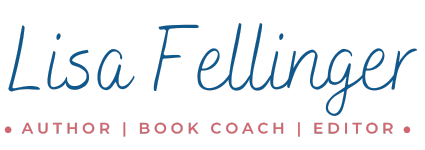Why Didn’t I See That?
Why Developmental Editors Catch Things You Don’t See
A year-and-a-half ago, I’d hired my own developmental editor for my manuscript. I’d been working on this story for several years by this point and had worked on it in workshops and solicited critiques and feedback from fellow writers. But there is such a thing as too much feedback when it comes to our writing, and all the feedback and input I’d received left me feeling confused about the direction I needed to take to really make this story work.
So I hired an amazing editor and she gave me wonderful feedback, and as I was working through her suggestions, I came across a part that simply wasn’t working. I emailed my editor and asked her input, and she replied that of course that part wasn’t working; I’d given my story two “dark knight of the soul” moments, so the second time around felt redundant.
Duh! I thought. How had I not seen that myself? It seemed so obvious the moment she said it, but I’d been struggling with that part for at least a week and hadn’t pieced it together.
This is where the true power of a developmental editor comes in. While an important aspect of a developmental edit is finding things the writer wouldn’t know how to fix and teaching them so they become stronger writers, there’s also a lot of power in an editor finding things the writer themselves know is an issue but simply didn’t see in their own work. In the example above, if you’d given me someone else’s manuscript with two “dark knight of the soul” moments, I’d likely have been able to point it out no problem. But because the story was mine, I simply didn’t see it.
Why does this happen? Why can we as writers understand the structure of a story or the “rules” of writing but fail to execute this knowledge in our own manuscripts? A couple of reasons.
1. We’re Too Close to the Story
There’s no question that writers become attached to their stories. Sometimes that’s because the story is based on something very personal to the writer, sometimes simply because we’ve grown to love these characters we created. Regardless of the reason we’re attached, that attachment can sometimes cloud our judgment on what works and what doesn’t serve our story in the best way.
I see this often with a story that begins in the “wrong” spot. A lot of times, writers see the beginning of their story first – it’s how the idea started for them, so it makes sense that’s where the story should begin, right? But that’s not necessarily true. Just because the story started in our minds in a certain place doesn’t necessarily mean that’s the best place to begin our manuscript. Or just because we love our characters and don’t want to see them struggle doesn’t mean they don’t need to struggle in order for the story to feel satisfying to a reader.
The list goes on, but these are the kinds of things that only an impartial, outside perspective can often pick up on. As the writer, we might have the sense something isn’t working, but we may not be able to clearly see and identify the issue because we’ve grown so close to the story that we can’t picture it any other way unless someone else comes in and points out why something isn’t working. Because a developmental editor doesn’t have an emotional investment in the story, they’re often better able to see these issues and think of different alternatives that might work better.
2. We’ve Grown Numb to the Story
There’s a meme that says we’re told to write the story we want to read because we’ll have to read it a million times as we draft and revise and revise and revise. It’s absolutely true that by the time our manuscript is “finished,” we’ve read through it so many times we likely have lost count. Unfortunately, with this amount of rereading, we often become numb to what’s actually on the page.
We know what we wanted to convey, what should be there. But that doesn’t always mean we were successful in getting our thoughts and intentions onto the page. Just like it’s easy to overlook typos in your own writing because you knew what you meant to say, it can be easy to overlook things like relationship building, successful character arcs, world building, etc. The picture is clear in our own mind, and sometimes we can’t successfully slip into a reader’s mindset and see what’s missing or what isn’t working.
But a developmental editor comes at your story with fresh eyes. And fresh eyes can pick up on things that tired, numb eyes simply can’t. Fresh eyes see what’s on the page without knowledge of what you’d intended to put there.
So, if you get your manuscript back from your developmental editor and think to yourself, “Why didn’t I see that?” know that you’re not alone. Even this developmental editor missed a pretty big issue with her own manuscript! That’s the point of having a developmental edit: as writers, we can’t catch everything, and as knowledgeable as we might be about the craft of writing, seeing an issue in someone else’s story and seeing it in our own are two different skillsets. My biggest hope is that the writers I work with never feel like they are bad writers because they didn’t pick up on the issues I point out, but that they appreciate and value the feedback I can give them from that outside perspective.

